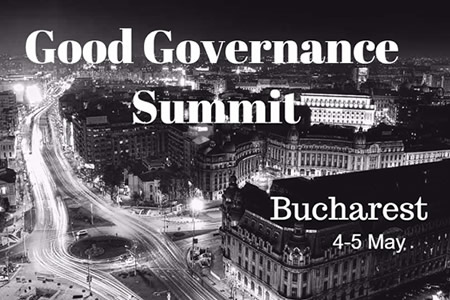The case for turning stories about desires into implemented, public strategies
The world is changing every day!
Human evolution could be observed through the complexity of ideas mankind came up with, the technology it has created, the economy and the new services it has built, and through so many more lenses. Sometimes change happens very fast and we often realize that many things could have been done better. As there is no time for regrets, there’s always time for lessons, for analyzing new ways of doing things. In every moment, the reset button is very close, in order to create a new beginning, to reshape at any level bureaucratic procedures, mechanisms, even strategies, according to people’s needs or aligned to new challenges.
Great economies keep moving forward, “throwing money” at research, designing the paths the world will follow, while other societies are still looking for the second step of the “Maslow pyramid”.
What about Romania? What about Europe?
Romania is connected to the top of the world in almost every domain (think of high tech) but still stuck in the underground. Its 2016, and There is still much frustration in not having achieved the basic and necessary steps to reduce the gap between us and Western Europe. This part of the EU is stuck in limbo, as it has huge potential to grow, to build the country we see in city-breaks.
So, what’s missing?
At first glance, Romania needs transport and energy infrastructure, as a frame for big investments. As it is more dynamic, the private sector will manage to take advantage of the opportunities to grow, create jobs and thus make the economy a thriving one. Does everyone know Romania needs improved infrastructures? Does Romania have strategies in those areas? Does the EU have an interest for this infrastructure to be built?
The questions’ list could continue for years, but this is the very moment to agree for simple strategies and, most importantly, TO IMPLEMENT WHAT HAS BEEN AGREED UPON. No more time consuming debates.
We should also keep an eye for patterns, as the EU has both positive and negative stories regarding similar situations; the wheel has been invented, we should only adapt it to our carriage.
First step: Say what you’re going to do! Say it clear!
Unfortunately, specialists use their energy and resources into formulating complicated strategies and spend too little time figuring out how to implement them. Strategies are frequently created in an ivory tower, by a small group of people very proud of their eloquence.
Once we have a strategy, it should be used.
As Scott Edinger argued for Forbes, leadership is required in such a way so that it allows strategies to come to life in every corner of the organization. Too often, strategies are expressed as high level statements, they are too bureaucratic and people are unable to connect with them. It is important for the leader to clarify the strategy objectives, to manage, create and maintain relationships with people involved, to understand their needs and concerns, to negotiate, to find the best solutions and to meet their expectations efficiently and timely.
Second step: Do what you have said! Keep doing it!
When talking about infrastructure strategy, we realize that public managers are changing too fast, according to election cycles and usually they disagree with the legacy of their predecessors.
Romania needs a consensus between great leaders about the guidelines to follow at least in the next decade, a strategy well communicated to everyone, in a system wholly integrated. For example, a credible plan to enhance the energy sector will encourage teenagers to specialize in this area, as they will have a perspective for good jobs. At the same time, private investments shall rise and thus, a chain of trust will be created.
There’s nothing new in these words, there’s nothing new in implementing strategies: it’s all about willingness of assuming the responsibility and of carrying the burden through the storm of criticism, ignorance and laziness.
Closely related to strategy (what you do) is tactics (how to do it), as the old saying reminds us, the evil is always hidden in details. Nonetheless, solutions are found by those relentless in their pursuit.
Once a strategy is written, the leader should really train the team responsible with implementation, otherwise it will remain a wonderful story about desires. It is vital for strategy lines to be translated into operational and practical steps, in such a way that managers be able to inspire and motivate their teams to design implementation plans, every day.
Too often, many strategies are covered in dust, avoiding reforms, preserving the atmosphere of doubt and criticism. Managers are called to deal with people who can’t trust anybody or anything, who demand evidence which is difficult to provide. They have preconceived ideas and are unwilling to change. Martin Luther said: “The art of doubting is easy.” When doubt starts growing between managers and teams, every late start is counted, every request for time off is seen with skepticism and the result disappears from the horizon.
Moreover, there is a red wire in this story: Human Resources politics and the right people in the right place.
To turn a strategy into visible actions requires vision and engagement, as process improvements are needed EVERY SINGLE DAY.




